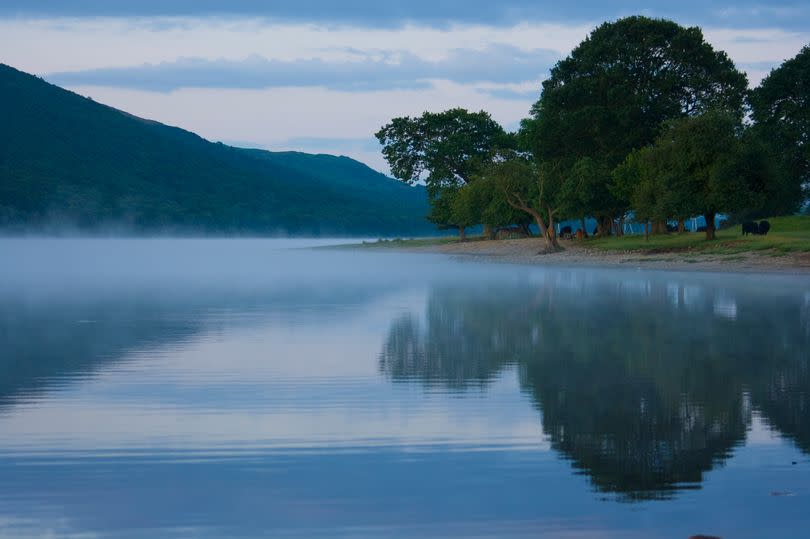27 rivers, beaches and lakes designated 'bathing waters' meaning increased testing - full list

Dozens of new wild swimming spots in England are being designated as bathing waters ahead of the summer and will be intensively monitored to see if they are safe. The nation’s rivers and lakes have come under scrutiny with growing public anger over the state of England’s rivers and coastal waters, which suffer pollution from sewage outlets and other sources such as agricultural run-off.
Following a public consultation, 27 new bathing water sites will be designated ahead of the 2024 bathing water season, which runs between 15 May and 30 September. The new sites will take the total number of bathing waters to 451 across England – the highest number to date.
The new bathing waters – which include a dozen river sites – can be found right across the country from Church Cliff Beach in Dorset to Derwent Water in Cumbria, to the River Dart in Devon and the River Nidd in North Yorkshire. The Environment Agency regularly monitors water quality at designated bathing water sites and assesses whether action is needed to cut pollution levels – working with local communities, farmers, and water companies to improve water quality at these locations.
The government will also launch a consultation later this year on proposals to reform the Bathing Water Regulations for England. The proposed changes will drive work to improve bathing water quality, enhance monitoring and enable more flexibility around the dates of the bathing water monitoring season. For example, proposals will include increasing monitoring outside of the bathing water season and preventing automatic de-designation of existing bathing water sites.
However environmental campaigner Feargal Sharkey said: "Every single stretch of river currently designated as a bathing area has a 'Do not swim' advisory posted. you have been warned."
Defra will also seek public and stakeholder views on extending the definition of ‘bathers’ to include a wider range of water users in addition to swimmers – such as rowers, kayakers and paddle boarders. More information on this consultation will be published in due course.
The next application round will commence in Spring 2025. Water Minister Robbie Moore said: “The value our bathing waters bring to local communities is incredibly valuable – providing social, physical and positive health and wellbeing benefits to people around the country – and I am pleased to have approved a further 27 new bathing water sites for this year.
“These popular swimming spots will now undergo regular monitoring to ensure bathers have up-to-date information on the quality of the water and enable action to be taken if minimum standards aren’t being met. I am fully committed to seeing the quality of our coastal waters, rivers and lakes rise further for the benefit of the environment and everyone who uses them.”
Environment Agency Chair Alan Lovell said: “The importance of England’s bathing waters for residents and visitors alike cannot be understated, which is why the Environment Agency provides rigorous testing to ensure that bathers can make informed decisions before swimming in one of our 451 sites.
“Overall bathing water quality has improved massively over the last decade due to targeted and robust regulation from the Environment Agency, and the good work carried out by partners and local groups. Last year, 96% of sites met minimum standards, up from just 76% in 2010 – and despite stricter standards being introduced in 2015.
“We know that improvements can take time and investment from the water industry, farmers and local communities, but where the investment is made, standards can improve.”
Last year, 96% of bathing waters in England met the minimum standards, with 90% classified as ‘good’ or ‘excellent’, up from 76% in 2010, despite the classification standards becoming stricter in 2015. The government also updated its guidance last year to make the application process clearer and easier to follow.
On the above claims Mr Sharkey said the below on X:
List of new bathing sites:
Church Cliff Beach, Lyme Regis, Dorset
Coastguards Beach, River Erme, Devon
Coniston Boating Centre, Coniston Water, Cumbria
Coniston Brown Howe, Coniston Water, Cumbria
Littlehaven Beach, Tyne and Wear
Manningtree Beach, Essex
Monk Coniston, Coniston Water, Cumbria
River Avon at Fordingbridge, Hampshire
River Cam at Sheep’s Green, Cambridge, Cambridgeshire
River Dart Estuary at Dittisham, Devon
River Dart Estuary at Steamer Quay, Totnes, Devon
River Dart Estuary at Stoke Gabriel, Devon
River Dart Estuary at Warfleet, Dartmouth, Devon
River Frome at Farleigh Hungerford, Somerset
River Nidd at the Lido Leisure Park in Knaresborough, North Yorkshire
River Ribble at Edisford Bridge, Lancashire
River Severn at Ironbridge, Shropshire
River Severn at Shrewsbury, Shropshire
River Stour at Sudbury, Suffolk
River Teme at Ludlow, Shropshire
River Tone in French Weir Park, Taunton, Somerset
Wallingford Beach, River Thames, Berkshire
Derwent Water, Crow Park, Keswick, Cumbria
River Wharfe at Wetherby Riverside, West Yorkshire
Goring Beach, Worthing, West Sussex
Worthing Beach House, Worthing, West Sussex
Rottingdean Beach, Rottingdean, East Sussex

 Yahoo News
Yahoo News 
